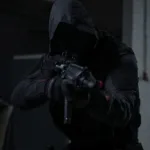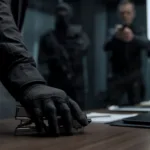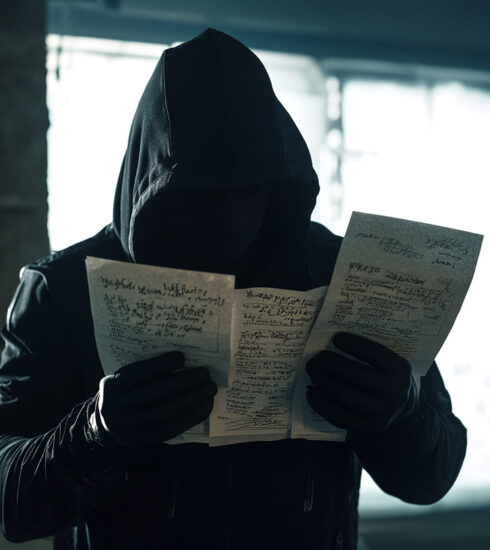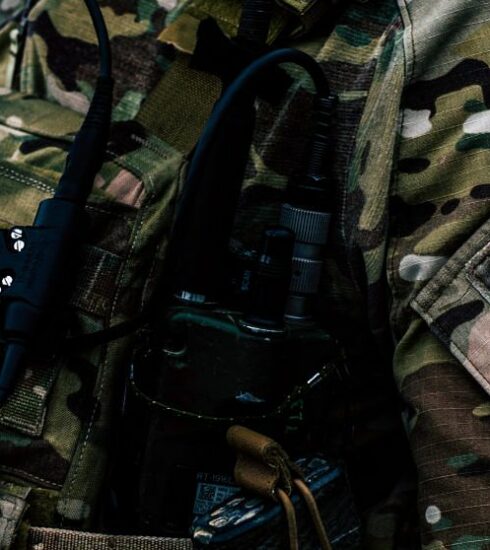The Tactical Pause
Before we move, speak, or we pull that trigger, we pause – strategically. Not out of fear but out of control. That’s what we call the tactical pause. Useful for ops and war to normal life and work.
In the field, there are moments when charging forward will get you killed and others when freezing up will do the same. That’s where the tactical pause comes in.
It’s a deliberate moment of stillness, a conscious breath you take before making your next move – when needed. And while it comes from the battlefield, it’s just as valuable in the boardroom, the kitchen, on the streets at home, or your kid’s parent-teacher conference.
Tactical Pause Explained
This pause is exactly what it sounds like: a short, intentional break taken before action. It should not be mistaken for hesitation or indecision.
It’s the space to think clearly, observe the environment, and make a better call. In high-stakes operations, it might be a heartbeat before breaching a door, a few seconds before responding to hostile contact, or a brief glance exchanged between operatives that says, “Hold. Think. Adjust.”
This pause isn’t a moment of weakness but a tactit of discipline, and more importantly, it’s control.
What makes it tactical is that it’s purposeful. You’re not freezing either, you’re recalibrating, scanning for new variables, weighing outcomes. It’s a mental checkpoint that turns raw instinct into calculated action.
Whether you’re facing a trigger squeeze or a tough conversation, the pause creates space for smarter decisions under pressure.
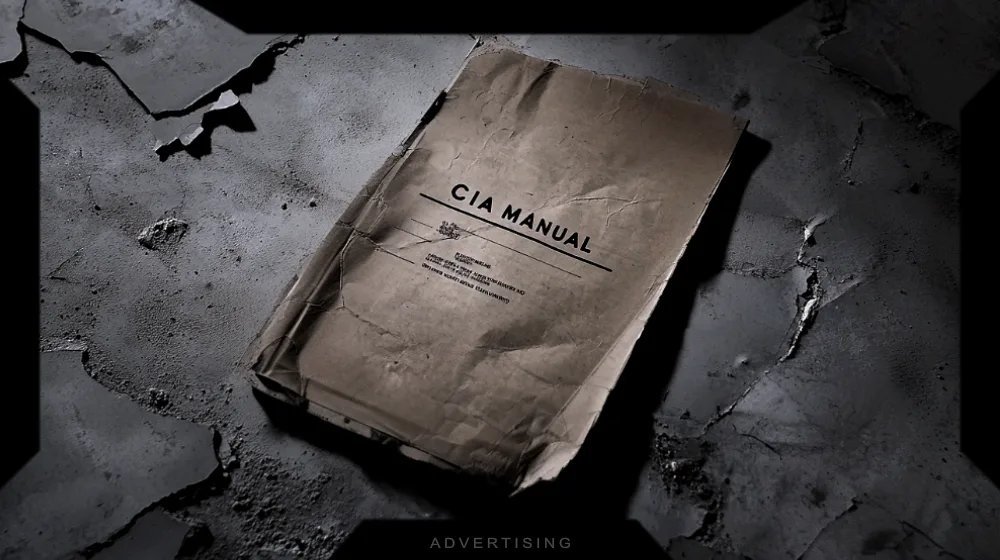
Where It Comes From
The tactical pause has its roots in military and Special Forces Operations doctrine. It gained traction post-9/11, when urban warfare required split-second judgment in chaotic environments. Kicking down a door in Mosul? You better not be running on muscle memory alone.
The tactical pause became a part of advanced training to remind operatives: don’t just do something – assess, then act.
The concept evolved out of necessity, too many missions went sideways because someone acted before thinking. High-tempo environments exposed a brutal truth: hesitation gets you killed, but so does blind aggression.
Commanders and instructors started emphasizing the pause as a tactical advantage, a habit that separates impulsive shooters from thinking professionals.
What’s It For?
Think of the tactical pause as your personal override switch. When things heat up (emotionally, physically, or situationally) your brain wants to react fast. That’s survival instinct talking. Problem is, instinct alone doesn’t win fights, close deals, or keep marriages intact.
The pause gives you the edge by creating just enough space to shift from reaction to response. You gain clarity. You take control. You avoid walking into something you’ll regret or can’t walk back from.
What the tactical pause actually does for you:
Better Decision-Making
When you pause, you buy time. And time (even just a few seconds) lets your higher brain catch up. You can prioritize objectives, assess risk, and weigh your options. It’s the difference between reacting impulsively and choosing deliberately. Whether it’s taking a shot, choosing your words, or walking away from a bad situation, the pause gives your decision some teeth.
Situational Awareness
That pause lets you scan the terrain, literally or figuratively. What’s changed in the last few seconds? Who’s moved? Where’s the pressure coming from? It could be a teammate flanking left, a hostile repositioning, or a shift in body language during a tense conversation. Pausing lets you pull in fresh intel and recalibrate your action based on now, not what you thought was happening five seconds ago.
Emotional Control
Adrenaline’s a hell of a drug. It narrows your focus and speeds you up, which sounds good until you’re tunnel-visioned and acting off emotion. The tactical pause lets you check your head before you do something driven by fear, anger, or ego. In the field, it stops you from going loud too soon. At home, it keeps you from saying that one thing that turns a small argument into a two-day silent war.
Team Cohesion
You’re not always flying solo. Pausing gives your team or the people around you a chance to get on the same page. Maybe your partner sees something you missed. Maybe your hesitation signals to them that you’re reassessing, so they should too. It’s a silent check-in that reinforces unity, control, and professionalism. A team that moves together doesn’t just survive, they win.
The tactical pause doesn’t just protect you from mistakes, it creates opportunities. It lets you pivot, adapt, and strike smarter. Whether you’re in a firefight or a tense meeting, the pause is where you reclaim the upper hand. Operatives don’t rush, they time their hits. You should too.
Even in civilian life, it’s gold. Ever fire off a text in anger? Ever say something in a meeting you regretted? That’s what happens when you skip the pause.
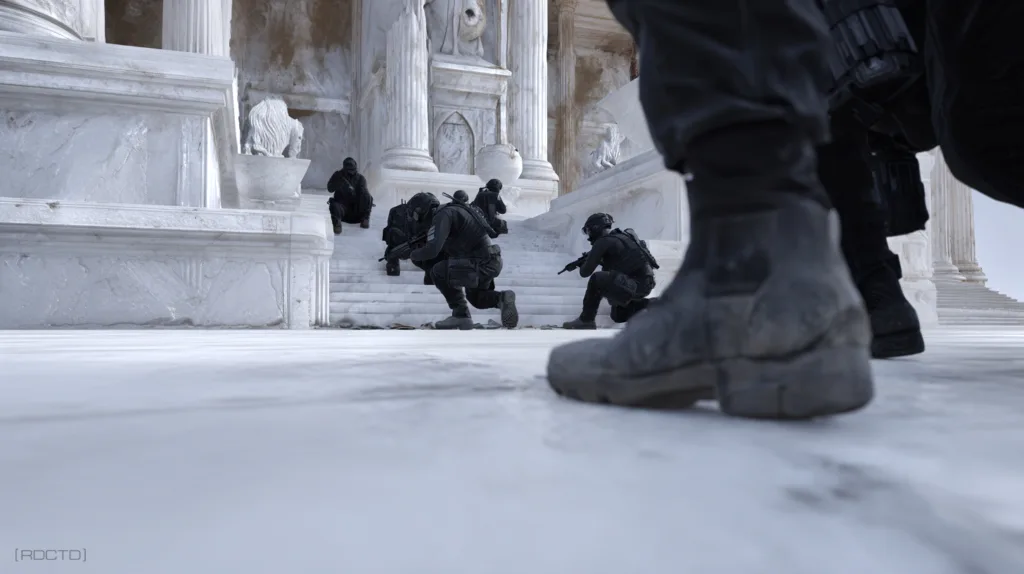
Real-World Examples
De-escalating a Road Rage Incident
You’re sitting at a red light when the guy behind you lays on the horn, speeds up next to you, and jumps out of his car screaming. His fists are clenched, eyes wild – he’s not thinking, he’s reacting. Now, you could match his energy and let it blow up, or you could take a tactical pause.
Instead of jumping out or yelling back, you stay seated, keep your hands visible, and make eye contact just long enough to acknowledge but not provoke. One breath. One second. Then calmly say, “Hey, man, it’s not worth it. We’re both just trying to get home.”
That brief pause disrupts his emotional momentum, defuses the tension, and gets him thinking instead of raging. You flipped the script without throwing a punch.
Operative Meeting with an Asset in Café
An operative is meeting a walk-in asset at a neutral location, a café just off a busy metro line. The intel could be legit, or the whole thing could be a setup. The asset walks in, sits down, but something’s off – he’s sweating, too alert, scanning the room too much. Instead of diving straight into the meet, the operative leans back and takes a slow sip of coffee. Tactical pause.
He doesn’t engage immediately – he watches, listens, tests the energy. He lets the asset speak first. That pause lets him catch the tension, spot the tail outside, and realize the man is compromised.
The meet is aborted, and the operative exits with his life and cover intact. One pause saved the mission, and himself.
Arguing with the Wife During at Home
You walk through the door late again. She’s waiting, arms crossed, voice already sharp. “You said you’d be home by seven. It’s nine.” You’re tired, annoyed, ready to fire back with “I was working, what do you want from me? ”But right before the words leave your mouth, you take a tactical pause.
One breath. You hold the line. Instead of snapping, you say, “I get why you’re upset. Let me explain before we both say something we regret.” That pause breaks the cycle. She softens. You talk, not fight. The pause isn’t about giving in – it’s about staying in control, choosing connection over conflict.
Just like in the field, sometimes pulling back for one second keeps the whole thing from blowing up.
SEAL Team Rescuing Hostages
A unit is tasked with rescuing hostages held inside a hostile-controlled structure – three-story concrete, minimal windows, unknown number of armed threats. They breach silently and sweep the first floor. No contact. As they move up the staircase, one man spots a flicker of movement through a cracked door – someone’s inside, but they can’t tell if it’s a threat or a civilian. Now, the rookie might kick that door without thinking. But the team leader signals a tactical pause.
The team holds. Eyes scan, ears listen. They reposition slightly, check comms, and pick up faint audio – crying. It’s the hostages. Intel shifts. Instead of a dynamic entry, they opt for a quieter breach from the side to avoid crossfire.
That pause (just seconds) lets them pivot tactics, avoid civilian casualties, and pull all hostages out alive with zero friendly fire. Discipline over speed.
Police Approaching a Drunk, Aggressive Group
A call comes in – group of drunk twenty-somethings getting loud outside a bar, one guy’s shirt is off, fists are starting to fly. Two patrol officers roll up and instead of charging in shouting commands, they stop 10 feet short. Tactical pause.
They observe – who’s actually the problem, who’s just loud, what’s the crowd’s vibe? One officer makes contact with a relaxed posture and a calm voice, saying, “Alright, no one’s getting arrested if no one gets stupid. Talk to me.”
That moment of stillness before engagement gives them control. No one gets hurt, and the crowd settles without escalation. That’s tactical thinking, not brute force.
Using the Tactical Pause in Everyday Life
You don’t need to be clearing rooms or dodging bullets to use the tactical pause. In fact, some of the most damaging decisions people make happen in totally normal settings – work, relationships, social media, everyday stress.
We live in a world that rewards speed, hot takes, and gut reactions, but speed without direction is just noise. The tactical pause puts you back in charge of your own tempo. It’s how you stay sharp, collected, and intentional when everyone else is running on impulse.
In Conversations
Ever get into an argument and say something you regretted before the words even finished coming out of your mouth? That’s what happens when emotion drives the wheel. A tactical pause gives you just enough breathing room to respond instead of react. You listen better, think clearer, and choose your words like they matter – because they do. Tactical communication beats emotional outbursts every time.
In Decision-Making
We’ve all felt that itch to make a snap choice – quit the job, send the text, spend the money. But those high-speed decisions often come with high-cost consequences. Pausing before you act gives you a chance to think through the second and third-order effects. It turns knee-jerk reactions into calculated moves, which is exactly how operatives operate in the field.
In Conflict
Whether it’s a heated meeting or a family blow-up, conflict demands composure. The pause gives you the edge. You buy time to read the other person, measure your response, and keep the upper hand. You’re not backing down, you’re setting the tempo. That calm, controlled energy? That’s power, and people feel it.
Before Hitting “Send”
Digital mistakes are permanent. A tactical pause before firing off that email, post, or reply can save your job, your reputation, or your relationships. Reread it. Think about how it lands. Ask yourself: is this helping or just venting? A one-minute pause could prevent a year of cleanup.
Here’s the truth, life moves fast, but that doesn’t mean you always have to. The tactical pause is a built-in edge most people never use. It sharpens your thinking, steadies your emotions, and keeps you in control when it counts. In the field, we use it to stay alive. In everyday life, you can use it to stay ahead. Same mindset. Different battlefield.
Anyone can react. Professionals pause, assess, then respond with dominance.
The tactical pause is a weapon. Simple. Deadly. Often overlooked. It separates the pro from the amateur. Operatives live and die by it. And civilians would be a hell of a lot better off if they learned to use it too. It’s not about slowing down but about being smart. About owning the moment instead of letting the moment own you. Next time you’re about to speak, act, or react – take a tactical pause.
[INTEL : Special Forces ‘Realistic Self-Defense’]


